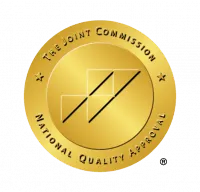What Is Cognitive Bias Modification, and Can It Help You Quit Drinking?
Cognitive bias modification, also referred to as CBM, has been gaining attention as a tool to help people change challenging behaviors. It works on a simple principle: some people have a more significant reaction to negative stimuli than others. Changing this reaction might provide relief from certain psychological symptoms, or even help people quit addictive habits such as alcohol abuse.
Given the shortage of qualified addiction experts and the high expense of traditional treatment facilities, some are looking to CBM as a new solution. Could cognitive bias modification be a low-cost way to get treatment to more people, and break the cycle of addiction?
Cognitive Bias Modification (CBM) and Alcohol Addiction

The science of cognitive bias modification is relatively straightforward. Throughout the day, people’s brains are bombarded with stimuli, and they often respond to those stimuli without thinking. In some cases, this can have negative consequences. CBM attempts to retrain the brain to make healthier choices when faced with stimuli. During actual CBM treatment, people see brief images, and practice saying yes to the positive stimuli, and no to the negative ones.
How can this help someone who struggles to control their drinking? Consider the alcohol-related stimuli in a person’s daily environment: These might involve billboards and advertisements, the sale of beverages at restaurants or sporting events, or even seeing friends lifting a pint at the local bar. For some people, these stimuli can cause a strong, nearly automatic urge to drink. Helping a person relearn their responses to these stimuli could theoretically help them resist drinking urges.
But does this actually work in practice? So far, research on cognitive bias modification for alcohol addiction has been promising. In a 2021 study, people undergoing treatment for alcohol use disorder showed lower rates of relapse after practicing CBM. Interestingly, one study also suggests that this approach may work better with older patients. However, as of this moment, more research is still needed on CBM for alcohol use disorder.
Pros of CBM For Overcoming Alcohol Addiction
Many people with alcohol use disorder take their next drink without even thinking about it. CBM therapy can be a valuable tool in breaking this knee-jerk reaction. It shifts decision-making away from the impulsive toward the rational, and helps readjust a person’s default response. When combined with counseling for managing drinking triggers, this can give someone a powerful boost.
Also, when compared with medication-based approaches to beating alcohol cravings, CBM doesn’t carry pharmacological side effects, which can be challenging for some.
Cons of CBM For Alcohol Use Disorder
Some studies have called into question the effectiveness of CBM for addiction relapse, citing inconsistent protocol in previous research. This means that we still need more trials to know for sure if this is a useful approach. CBM also has a very narrow focus. It can help in modifying specific triggers, but that does not mean a person’s overall behavior will change. For example, a person may not have such a strong reaction to seeing an alcohol advertisement after CBM, but they still may choose to drink.
How CBM Works in Practice, and App-ifying It

As touched on above, in CBM treatment the patient sees two pictures. In the case of alcohol, one picture might be a glass of wine or a bottle of beer. The other picture could be a healthier beverage choice. The patient is encouraged to use their mouse or joystick to select the healthy option and reject the alcoholic choice. Patients quickly get the hang of this, and the choice can begin to feel more automatic.
Because CBM is game-like, it can be useful for engaging people with lower motivation. And since it involves choosing images, it also naturally lends itself to “appification.”
One group of researchers in Australia has designed an app known as SWiPE, that allows people to try CBM for alcohol addiction from home. While that app is only barely out of trials, results so far have been promising, and it is now being released publicly Outside of addiction treatment, CBM is already finding its way into a variety of apps. Mood Mint, for example, uses CBM techniques to help people take a more positive perspective on daily life.
How CBM Compares With Other Treatment Approaches
Cognitive bias modification is one way to change how your brain reacts to the idea of alcohol—but it isn’t the only way. How does CBM stack up against other approaches like Cognitive Behavioral Therapy (CBT) and Medication-Assisted Treatment (MAT)?
Cognitive Behavioral Therapy
Cognitive behavioral therapy, often shortened to CBT, involves identifying negative thought patterns that drive problematic behaviors, and replacing them with positive ones. This generally involves working with a counselor or therapist, but also involves skills and practices that a person can use to adjust their thinking in everyday life.
CBT has a broader focus than CBM, and has a longer history of use for mental health issues and addiction. It therefore has much more research to support it. However, since CBM and CBT have such similar goals, it’s quite likely that they are an effective combination for overcoming problem drinking.
Medication-Assisted Treatment
Another common way to change a person’s thinking around alcohol is through medication-assisted treatment, or MAT. The Sinclair Method, for example, involves taking the drug naltrexone to block some of alcohol’s pleasurable effects while continuing to drink. Over time, this can train a person’s brain to no longer associate alcohol with pleasure, and can actually end alcohol cravings for some people.
Compared with CBM, MAT may achieve a deeper change in a person’s brain. And, like CBT, medication has a much stronger body of evidence supporting its effectiveness. But, on the flip-side, medication can also come with difficult side effects. CBM may be a lighter way to change a person’s reaction to alcohol, and combined with counseling might be a useful alternative to MAT for some people.
Choosing Your Treatment Method
At Ria Health, we do not yet offer CBM to our patients. However, since we are an app-based treatment program, we are excited about the development of new digital tools to help people change their relationship with alcohol.
As of the present moment, Ria Health offers cognitive behavioral therapy, medication-assisted treatment, and a range of other effective methods through a convenient smartphone app. Our members can meet with medical professionals and licensed recovery coaches through video chat, access prescriptions, and even use a digital breathalyzer to measure their progress—all from their personal device.
Learn more about the online treatments we currently offer for alcohol use disorder.
Will insurance cover treatment? Verify Coverage
Have Questions? Call (800) 504-5360



